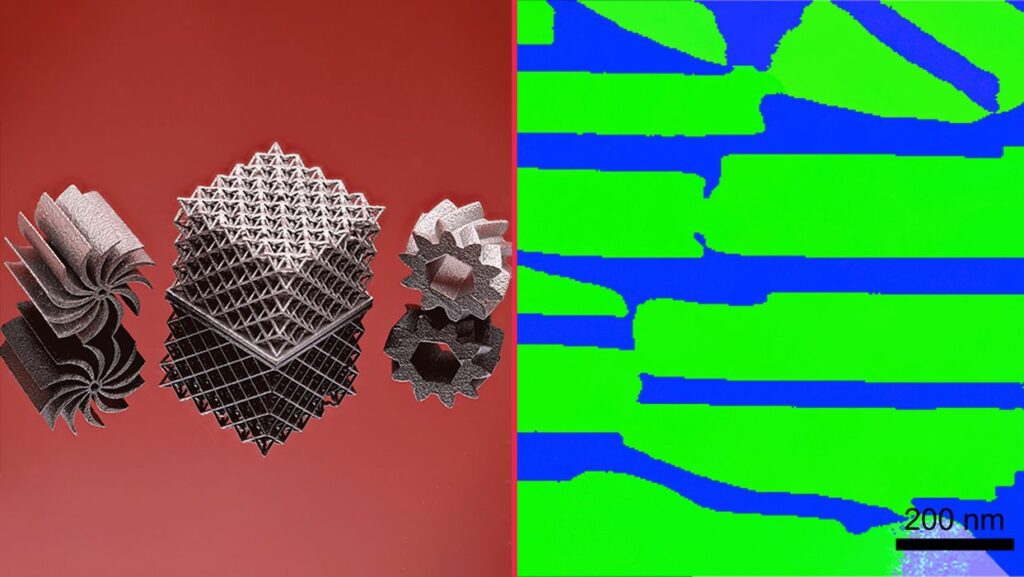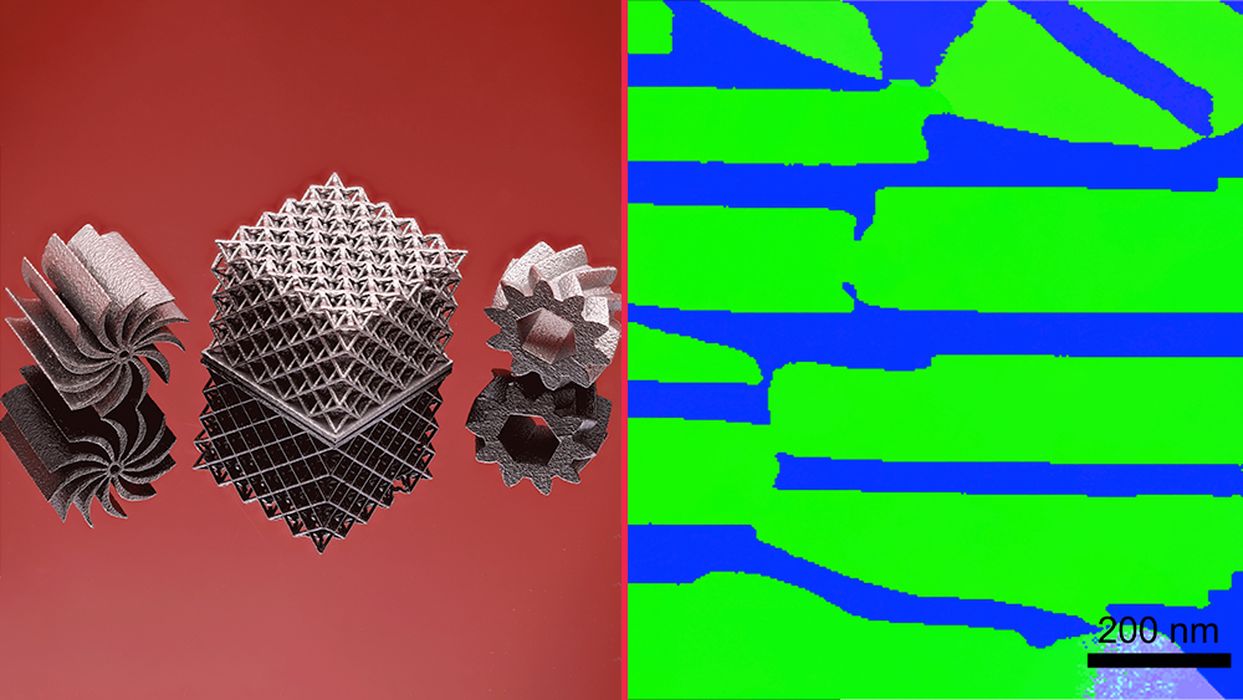
Researchers have developed a highly unusual technique for 3D printing metal objects that are both strong and ductile.
This sounds contradictory, as “strong” would seem to be the opposite of “ductile”. But in fact there are applications where such a mystery material could be used. Metals with a bit of “give” can avoid shattering that occurs with strong — but brittle — metals.
The problem is, how exactly does one create such a magic material?
Strong materials are characterized by a rigid crystalline molecular structure. That configuration makes strength, but also creates brittleness that could be catastrophic in an impact situation.
On the other hand, if the molecular structure is loose, you have a more ductile metal that can bend. But then you loose the strength.
This is the case in most metal 3D printing scenarios today, where the metal objects produced are “single phase”. In other words, the molecular structure is more or less uniform throughout the object. You get either ductile or strong, but not both.
The researchers identified an ingenious method to overcome this dilemma by using a dual-phase approach.
Basically they were able to create a metal that is molecularly structured like lasagna: alternating layers with different characteristics. One type provides the strength, while the other provides the ductility.
That may sound straightforward, but how do you create an alternating structure like that?
It turns out they used a “eutectic high-entropy alloy”.
Let’s catch up here a bit before we go further. “Eutetic” is a type of alloy that has a melting temperature lower than that of the individual component metals. A “high entropy” metal is one that is mix of metals in large concentrations, rather than just trace quantities as is the case in more common alloys.
Dr. Kelvin Xie of Texas A&M University explains how this works:
“A eutectic alloy is similar to a lasagna. First, you have a sheet of pasta, then sauce, meat and cheese. These layers repeat. In materials, the face-centered cubic phase and body-centered cubic phase are like sheets of pasta and the filling.”
Evidently this alloy self-organizes into the required molecular structure. This occurs because the swift heating and cooling process used in LPBF 3D printing creates the “pasta” layer in the metal.
Apparently this is the very first time dual-phase metal objects have been 3D printed.
This is an important research result that will no doubt be commercialized. As the technology appears to be material dependent, it is likely it will emerge as a material option that can be deployed on a variety of existing and future LPBF metal 3D printers.
Via TAMU

